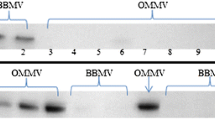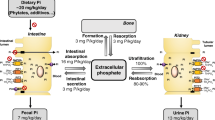Abstract
cis-Diamminedichloroplatinum(II) (cDDP) has been shown to interfere with reabsorption processes in renal tubular epithelia, leading to polyuria, magnesium and sodium wasting and glucosuria. cDDP inhibits the Na+-coupled uptake of methyl-α-d-glucopyranoside (MGP) in renal proximal tubular cells in primary culture. cis-Diammine-1,1-cyclobutane dicarboxylatoplatinum(II) (CBDCA) produces tubular injury qualitatively similar to that of cDDP with a reduced severity. CBDCA inhibits Na+-coupled MGP uptake in renal proximal tubular cells in primary culture at concentrations 20- to 30-times higher than those of cDDP. The Na+/glucose cotransport protein possesses sulphydryl groups (SH) essential for its activity. Platinum complexes have strong affinity for SH groups. We compared the direct effects of cDDP (0.04–1.0 mM) and CBDCA (1–30 mM) on Na+-coupled MGP uptake in rabbit renal brush-border membrane (BBM) vesicles. cDDP and CBDCA inhibited Na+-coupled MGP uptake in a concentration-dependent manner, mainly through a decrease in V max of the cotransport protein. These effects were associated with platinum binding to BBM and decreases in protein-bound SH groups. CBDCA altered Na+-coupled MGP uptake at concentrations 30-times higher than those of cDDP. When BBM vesicles were preincubated with cDDP or CBDCA, diethyldithiocarbamate (an antidote against cDDP-induced nephrotoxicity) partly restored Na+-coupled MGP uptake and reduced the amount of platinum bound to BBM, but did not restore protein-bound SH groups. These findings strongly suggest that the inhibition of Na+-coupled MGP uptake by cDDP and CBDCA is mainly mediated by direct chemical binding of platinum to essential SH groups of the cotransport protein but may also involve other nucleophilic groups, such as the SCH3 group of methionine residues.
Similar content being viewed by others
Author information
Authors and Affiliations
Additional information
Received: 22 April 1998 / Accepted: 21 July 1998
Rights and permissions
About this article
Cite this article
Potdevin, S., Courjault-Gautier, F., Ripoche, P. et al. Similar effects of cis-diamminedichloroplatinum(II) and cis-diammine-1, 1-cyclobutanedicarboxylatoplatinum(II) on sodium-coupled glucose uptake in renal brush-border membrane vesicles. Arch Toxicol 72, 663–670 (1998). https://doi.org/10.1007/s002040050558
Issue Date:
DOI: https://doi.org/10.1007/s002040050558




